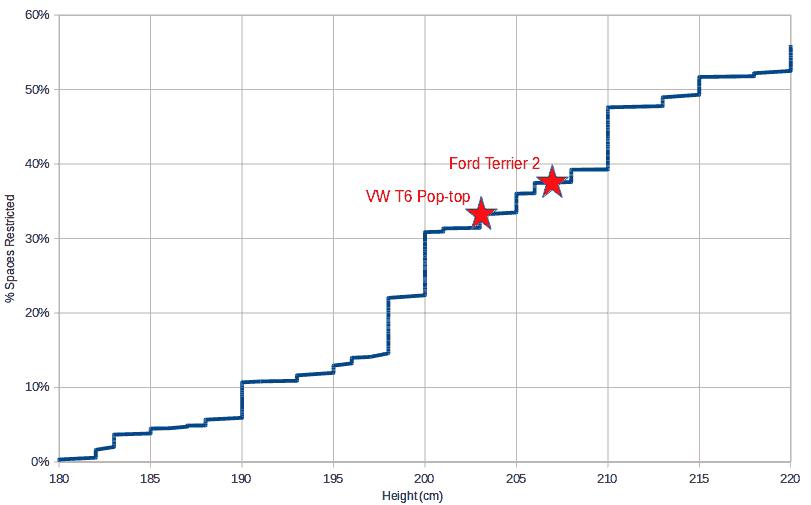Ever wondered what proportion of car parking spaces are subject to height restrictions?
We are currently selecting a camper van and the big choice is between a VW Transporter or Ford Transit base vehicle. The Transit seems better value for money, with superior features in the base vehicle, at a lower price. But one concern is that the pop-top Transit conversion is around 2.07 m high, whereas the pop-top VW is variously spec’ed as 2.00 m or 2.03 m.
How significant is this difference in terms of access to height-restricted car parking spaces?
To find out I built a scraper to collect car park data from Parkopedia. I suspect Parkopedia is not keen on this type of activity; they don’t have an open API, and I seemed to get banned after scraping the site a few too many times. But I’m not exploiting the detail of their data (which is very comprehensive) just aggregating and summarising. Grateful thanks to Parkopedia for the data.
I pulled the data for 13 of the UK’s most populous urban areas: London, Manchester, Birmingham-Wolverhampton, Leeds-Bradford, Glasgow, Southampton-Portsmouth, Liverpool, Newcastle, Nottingham, Sheffield, Bristol, Belfast, Leicester and Cardiff – a total of 242,500 parking spaces – and plotted the percentage of spaces from which a vehicle of any particular height would be excluded.
So what did I find? Well, either vehicle has access to the majority of car parking spaces. The number of spaces that fall between 2.03 and 2.07 is pretty small; about 5%. Although a more cautious person might baulk at taking the Transit under a 2.10 restriction, in which case a further 9% of spaces become inaccessible.

Josh
/
Nice data analysis, thank you!